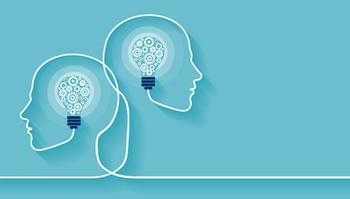
- LCGC North America-03-01-2015
- Volume 33
- Issue 3
Choosing the Right HPLC Stationary Phase
There is a bewildering array of stationary-phase choices available for reversed-phase high performance liquid chromatography (HPLC), and even within each phase designation (such as "C18") the selectivity of each phase can vary widely.
There is a bewildering array of stationary-phase choices available for reversed-phase high performance liquid chromatography (HPLC), and even within each phase designation (such as "C18") the selectivity of each phase can vary widely.
Let's be honest, a lot of our method development is carried out using trial and error, typically based on phases that have worked for us in the past or are the "new best thing" from our favorite manufacturer. Even those of us with advanced "screening" platforms containing arrays of carefully considered orthogonal chemistries and computer-optimized eluent design systems, sometimes have to resort to "chromatographer's instinct."
Retention in reversed-phase HPLC is typically based on an equilibrium between the analyte, the mobile phase, and the bonded stationary phase (C18, for example), and the nature and accessibility of the silica surface onto which the ligand is bonded. The chemistry of the bonded phase, the nature of the silica surface treatment, and the surface accessibility all need to be considered and classified to properly understand the retention mechanisms that are influencing a separation, which will then influence the initial column choice or method optimization.
Figure 1: Retention mechanisms of some common reversed-phase ligands and residual silica surface species.
Dispersive interactions are predominant in most reversed-phase separations, especially those using unmodified alkyl ligands (C18, C8, C4), and retention will be proportional to the hydrophobicity of the analyte. Charge transfer (or π–π) interactions are in play when aromatic or unsaturated phases or analytes are analyzed. Dipole–hydrogen bonding interactions are important for the retention polar compounds, and stationary phases such as "cyano" enhance this type of retention. Electrostatic interactions occur between ionized sites on the analyte molecule and the silica surface, and in most cases are caused by ionized residual silanol groups.
Figure 2: Radar plots of similar (right) and orthogonal (left) stationary phases based on data from the PQRI database, which in turn is based on the hydrophobic subtraction model.
Many column-classification systems exist, based on the use of various chemical test probes that are known to describe unique characteristics of a stationary phase, and one very useful example is the Product Quality Research Institute (PQRI) database hosted within the USP website (
Table I: Some major stationary-phase classifications and their general applicability
Table I shows a summary of the major classifications of phases currently available and their applicability.
References
(1) L.R. Snyder, J.W. Dolan, and P.W. Carr, J. Chromatogr. A 1060, 77–116 (2004).
(2) L.R. Snyder, J.W. Dolan, and P.W. Carr, Anal. Chem. 79, 3255–3261 (2007).
Articles in this issue
almost 11 years ago
Listen to the Dataalmost 11 years ago
Modern Supercritical Fluid Chromatography — Possibilities and Pitfallsalmost 11 years ago
Gas Chromatography Ovensalmost 11 years ago
LC–MS-Compatible Approaches for the Quantitation of Limonin in Citrus Juicealmost 11 years ago
Finding Answers with Foodomicsalmost 11 years ago
An Open-Source Simulator for Exploring HPLC Theoryalmost 11 years ago
App of the Month: Chromatography Quizalmost 11 years ago
Vol 33 No 3 LCGC North America March 2015 Regular Issue PDFNewsletter
Join the global community of analytical scientists who trust LCGC for insights on the latest techniques, trends, and expert solutions in chromatography.





